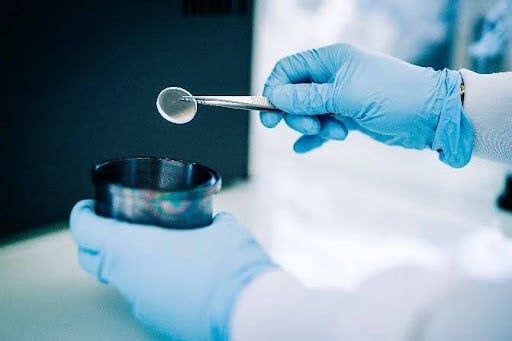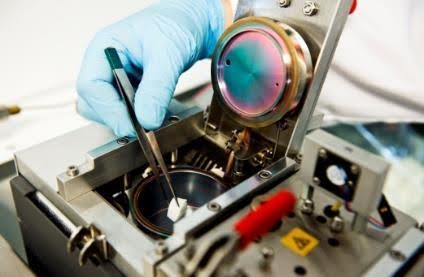
What are the implications of potential outgassing in cleanrooms?
Outgassing of materials in cleanrooms is a crucial aspect to consider when planning and operating these highly controlled environments. Outgassing refers to the release of gases or volatile compounds from a material.
In a cleanroom, outgassing can lead to contamination of air and surfaces, which is undesirable. Materials used in cleanrooms must have a low outgassing rate. Failure to do so can result in the presence of particles or chemical contaminants, compromising cleanroom cleanliness and potentially leading to product contamination, defects or performance degradation.
The study of outgassing can be carried out at high temperature, enabling the simulation of potential outgassing of the material before it is introduced into the cleanroom.
In short, the choice of low-outgassing materials is essential for maintaining the cleanliness and integrity of cleanrooms, thus guaranteeing optimum conditions for the satisfactory conduct of cleanroom activities.
Characterization of compounds emitted by a material using µ-CTE outgassing micro-chamber measurements in the laboratory
The µ-CTE outgassing microchamber can be used to identify the molecules likely to be outgassed by a material. Simulating the outgassing of a material in a micro-chamber enables us to characterize the chemical contaminants potentially emitted by this material, and to have access to the mass of contaminants outgassed per mass of material.

Material outgassing is the method of choice for determining the source of contamination, characterizing material emissions and taking preventive or curative action.
The material is placed inside the outgassing micro-chamber and swept by a stream of air or nitrogen.
The appropriate sampler is placed at the micro-chamber outlet to target the molecules of interest (e.g. bubbler for acids or tubes for VOCs).
These measurements are carried out in the laboratory and are destructive.
The families of compounds that can be analyzed after outgassing the material in the micro-chamber are presented below. Analysis results are expressed in terms of mass of compounds emitted per mass of material, generally in ng/g or µg/g.
- Diameter: 6 cm
- Depth: 5 cm
- Air or Nitrogen flow
- Outgassing temperature: 30°C to 250°C
Please contact us
- Octamethyl Cyclotetrasiloxane (D4); Hexamethyl Disiloxane (HMDSO) (L2); Octamethyl Trisiloxane (L3); Decamethyl Tetrasiloxane (L4); Dodecamethyl Pentasiloxane (L5) ; Hexamethyl Cyclotrisiloxane (D3); Octamethyl Cyclotetrasiloxane (D4); Decamethyl Cyclopentasiloxane (D5); Dodecamethyl Cyclohexasiloxane (D6)
- Formaldehyde; Acetaldehyde; Acrolein (2-Propenal); Propanal; Butanal (Butyraldehyde); Isobutanal (Isobutyraldehyde); Benzaldehyde; Pentanal (Valeraldehyde); Isopentanal (Isovaleraldehyde); Glutaraldehyde; m-Tolualdehyde; o-Tolualdehyde; p-Tolualdehyde; Hexanal; 2-Butenal (Crotonaldehyde); 2-Furaldehyde (Furfural); Methacrolein
- Ammonia; Hydrofluoric Acid (HF); Acetic Acid; Formic Acid; Lactic Acid; Nitrous Acid; Nitric Acid; Propionic Acid; Phosphate; Sulfate; Hydrochloric Acid; Sodium
Take a look at our analysis services for analysis of chemical contaminants in air and on surfaces.

